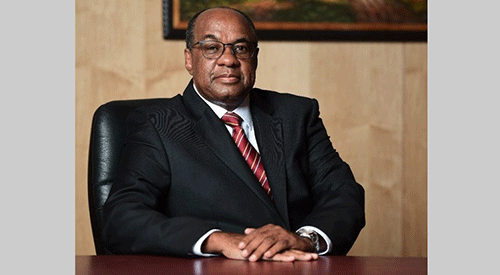The central bank’s Monetary Policy Committee (MPC) yesterday provided more relief to Namibian consumers when it reduced the repo rate for the second consecutive quarter, this time by 25 basis points from 7.50% to 7.25%. This decision is expected to provide much-needed relief to domestic consumers who have been languishing in a high-interest
rate environment for months.
“To continue supporting the domestic economy while simultaneously safeguarding the peg between the Namibia Dollar and the South African Rand, the MPC unanimously decided to cut the repo rate by 25 basis points to 7.25%. This decision was made following a comprehensive review of current and expected domestic, regional and global economic developments,” read
a statement from central bank
governor Johannes !Gawaxab.
Commenting on the Bank of Namibia’s decision, local economist Josef Sheehama said the move was neither shocking nor surprising. “The decision is consistent with the central bank’s belief that the current repo rate is suitable for bolstering the domestic economy and reducing consumer burdens,” he stated. He added that
another factor influencing the MPC’s decision to lower the repo rate is the recent drop in consumer inflation, which dropped to 3.40% in September.
“Lower fuel prices as a result of declining oil prices and a stronger Namibia dollar have been a major factor in this cooling of inflation. The interest rate cut will undoubtedly relieve pressure on all Namibians. Therefore, this will make things a little bit easier for the lower income bracket, or for consumers who are truly having a hard time making ends meet when it comes to paying their debts. Unfortunately, investors will also see a decline in their return, and the 0.75 basis point difference between Namibia and South Africa may cause capital flight as investors seek higher returns,” Sheehama added.
Domestic economy
Meanwhile, the central bank yesterday noted that domestic economic activity rose during the first eight months of 2024, although growth slowed on a quarterly and yearly basis during the second quarter of 2024.
“Inflation receded notably, and the projected medium-term inflation path has been revised downwards. Growth in Private Sector Credit Extension (PSCE) remained subdued. The merchandise trade deficit widened further, while the stock of international reserves continued to be sufficient to preserve the currency peg and meet the country’s international financial obligations,” !Gawaxab stated.
The central bank governor added that recovery in domestic economic activity that rose during the first eight months of 2024, relative to the same period in 2023, was broad-based with notable increases in the mining, electricity- generation, wholesale and retail trade, tourism, financial services, communication and transport sectors as well as the livestock marketing subsector.
“The pace of expansion nevertheless lost momentum. In this regard, the Namibian economy recorded a slower growth rate of 3.5% during the second quarter of 2024, compared to 4.3% and 3.6% in the preceding quarter, and the corresponding quarter of 2023, respectively. Looking ahead, growth is projected to moderate to 3.1% in 2024 and 3.9% in 2025, compared to a firmer pace of 4.2% recorded in 2023. The anticipated slowdown is primarily attributed to the weakening primary industry, partly reflecting the prevailing drought conditions and sluggish global demand,”!Gawaxab stated.
The BoN governor warned that risks to the domestic economic outlook stemming from external factors have intensified, while those from domestic factors remained broadly unchanged since the last MPC meeting.
“External risks include the escalation of geopolitical tensions, especially in the Middle East, geoeconomic fragmentation and weaker global demand. Internally, drought conditions and water supply interruptions, particularly at the coastal towns, continue to pose risks. The domestic disinflation cycle continued year-to-date. Inflation averaged 4.6% in the first nine months of 2024, compared to 6.0% recorded during the same period in 2023. The decrease in inflation was essentially driven by lower average food inflation, with communication and, most recently, transport inflation also playing a role,” he said explained.
Going forward, the central bank has revised the medium-term inflation forecast to 4.3% in 2024 and 4.0% in 2025, compared to 4.7% and 4.4%, respectively. The revised forecast is due to a more favourable outlook for international crude oil prices and a stronger exchange rate.



